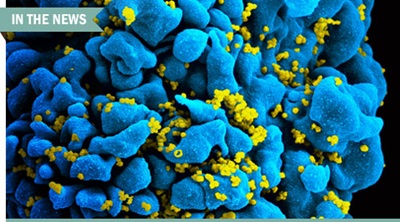
The Centers for Disease Control and Prevention (CDC) recently updated its recommendations for HIV testing, based on information reviewed by both CDC and the Association of Public Health Laboratories.
“The recommended algorithm is a sequence of tests used in combination to improve the accuracy of the laboratory diagnosis of HIV based on testing of serum or plasma specimens,” according to the CDC. “In brief, testing begins with a combination immunoassay that detects HIV-1 and HIV-2 antibodies and HIV-1 p24 antigen. All specimens reactive on this initial assay undergo supplemental testing with an immunoassay that differentiates HIV-1 from HIV-2 antibodies. Specimens that are reactive on the initial immunoassay and nonreactive or indeterminate on the antibody differentiation assay proceed to HIV-1 nucleic acid testing for resolution.”
The new guidelines incorporate HIV tests that the Food and Drug Administration (FDA) had approved as of December 2012, as well as expert opinion, scientific evidence, laboratory experience, and expert opinion gathered between 2007 and December 2013. However, the new recommendations don’t incorporate the rapid HIV-1/HIV-2 antigen/antibody combination test, which was approved by the FDA in August 2013, because “evidence of performance in the algorithm was insufficient,” and it also doesn’t include the HIV-2 nucleic acid tests, which are not FDA-approved. In addition, “because none of the assays in the recommended algorithm are FDA-approved for use with oral fluid or dried blood spot specimens, these updated recommendations do not supersede previous recommendations for testing of dried blood spots or oral fluid for HIV-1 using the FDA-approved immunoassay and HIV-1 Western blot for these specimen types.”
Specifically, the guidelines recommend the following:
Initial testing for HIV should be done “with an FDA-approved antigen/antibody combination (4th generation) immunoassay that detects HIV-1 and HIV-2 antibodies and HIV-1 p24 antigen to screen for established infection with HIV-1 or HIV-2 and for acute HIV-1 infection. No further testing is required for specimens that are nonreactive on the initial immunoassay.”
Any specimens that have a “reactive antigen/antibody combination immunoassay result (or repeatedly reactive, if repeat testing is recommended by the manufacturer or required by regulatory authorities) should be tested with an FDA-approved antibody immunoassay that differentiates HIV-1 antibodies from HIV-2 antibodies,” the new guidelines state. “Reactive results on the initial antigen/antibody combination immunoassay and the HIV-1/HIV-2 antibody differentiation immunoassay should be interpreted as positive for HIV-1 antibodies, HIV-2 antibodies, or HIV-1 and HIV-2 antibodies, undifferentiated.”
Additionally, any specimens that test as reactive on the first antigen/antibody combination immunoassay and test as nonreactive or indeterminate on the HIV-1/HIV-2 antibody differentiation immunoassay should then be tested with an FDA-approved HIV-1 NAT, according to the guidelines.
Finally, the CDC suggests that laboratories “use this same testing algorithm, beginning with a laboratory-based antigen/antibody combination immunoassay, with serum or plasma specimens submitted for testing after a reactive (preliminary positive) result from any rapid HIV test.”
The entire report, including the rationale for each of the above recommendations, is available online.